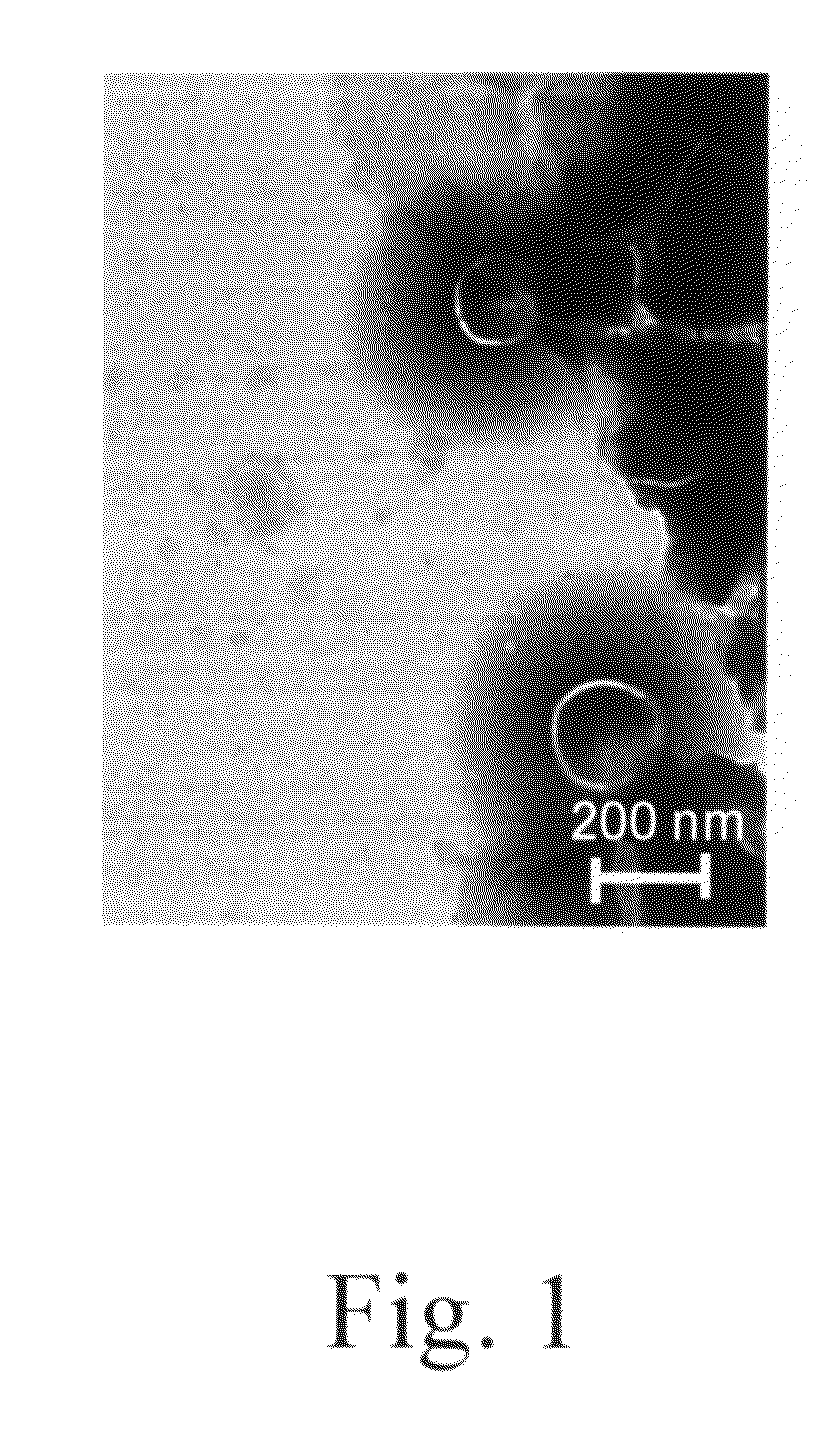Cationic amino acid type lipid
a cationic amino acid and lipid technology, applied in the field of complex lipids, can solve the problems of difficult to synthesize a cationic lipid, difficult to construct a formulation having properties, and high cost of formulations, and achieves the effects of easy production, easy to be synthesized, and convenient us
- Summary
- Abstract
- Description
- Claims
- Application Information
AI Technical Summary
Benefits of technology
Problems solved by technology
Method used
Image
Examples
example 1
Synthesis of the Cationic Amino Acid Type Lipid
[0057](A) A benzene solution (100 mL) of p-toluenesulfonic acid hydrate (4.56 g, 24 mmol) was subjected to boiling point reflux at 85° C., and water was removed before the reaction using Dean-Stark apparatus. Glutamic acid (2.96 g, 20 mmol) and hexadecylalcohol (10.7 g, 44 mmol) were added to the reaction solution, and subjected to boiling point reflux for 10 hours while the generated water was removed. As the reaction proceeded, the suspension was gradually dissolved to become transparent.
[0058]After the reaction completed, the solvent was removed at reduced pressure. The resultant solution was dissolved in chloroform, and washed with a saturated aqueous solution of sodium carbonate 3 times. The chloroform layer was dewatered with magnesium sulfate. The resultant substance was filtered, and then the solvent was removed at reduced pressure. The residue was recrystallized with methanol at 4° C. to obtain dialkylglutamic acid derivative (...
example 2
(A) Phase Transition Temperature of the Cationic Amino Acid Type Lipid
[0075]Each of the obtained cationic amino acid type lipids was dispersed in a simple medium of pure water at 60° C. and used as a measurement sample. 60 μL of a sample solution (lipid concentration: 1 wt %) was encapsulated in a silver pan (sealable type), and the phase transition temperature Tc was measured by a differential scanning calorimeter with the temperature elevation rate of 2° C. / min. and the measurement temperature of 20 to 80° C. The measurement results are shown in Table 1.
[0076]
TABLE 1Temperature of the gel to liquid-crystalline phase transitionCompoundTc [° C.]149.4241.2343.7444.8
(B) Zeta Potential of the Molecular Assembly Including a Single Type of Cationic Amino Acid Type Lipid
[0077]The zeta potential of a molecular assembly (1 mg / mL) including a single type of cationic amino acid type lipid (2), (3) or (4) prepared by the extrusion method was measured by a zeta potentiometer (Nano-ZS, Malvern) ...
example 3
Cytotoxicity Test on the Cationic Amino Acid Type Lipid (2)
[0090]The cationic amino acid type lipid (2) was evaluated in terms of cytotoxicity by adding different amounts thereof to cells. Specifically, 1×104 simian kidney-derived cells COS-7 or human fibroblasts CCD-32SK were planted to dishes and cultured for 24 hours in an incubator. To the cultured cells, a cationic liposome diluted with a medium was added so as to be 0.1, 1, 5, and 10 μg / dish. The cells were cultured for another 24 hours. Then, the cells were washed with a medium, and the cell survival rate was calculated by the WST assay. Based on the results, the cytotoxicity was evaluated (n=2). For comparison, the same test was performed using lipofectamine, which is currently in general use as a gene introduction drag. The results are shown in FIG. 6. In the figure, (a) represents the results with COS-7, and (b) represents the results with CCD-32SK. Where 10 μg of lipofectamine was added to COS-7, the cell survival rate 24...
PUM
| Property | Measurement | Unit |
|---|---|---|
| carbon number | aaaaa | aaaaa |
| temperature | aaaaa | aaaaa |
| carbon number | aaaaa | aaaaa |
Abstract
Description
Claims
Application Information
 Login to View More
Login to View More - R&D
- Intellectual Property
- Life Sciences
- Materials
- Tech Scout
- Unparalleled Data Quality
- Higher Quality Content
- 60% Fewer Hallucinations
Browse by: Latest US Patents, China's latest patents, Technical Efficacy Thesaurus, Application Domain, Technology Topic, Popular Technical Reports.
© 2025 PatSnap. All rights reserved.Legal|Privacy policy|Modern Slavery Act Transparency Statement|Sitemap|About US| Contact US: help@patsnap.com



